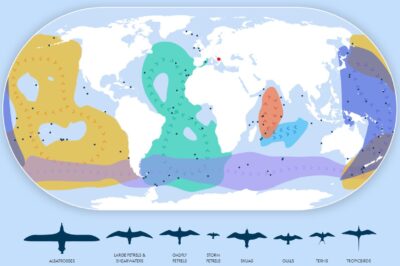
Flyways are ancient aerial highways all migrating land and shore birds use globally to move between overwintering and breeding locations every year. There are eight major flyways over land around the globe. But did you know that over the high seas, there are also Marine Flyways? Seabirds like petrels, albatross and terns are pelagic birds who live their lives flying over the open ocean, or resting on it – some never touching land unless they are breeding. They also make migrations, and many of them are stunningly long.
Just before Covid hit, scientists Tommy Clay and Michael Brooke placed GPS locators weighing 1 gr on one of the smallest seabirds – Stejneger’s Petrels, a pelagic bird whose status is Vulnerable with declining populations. After 2 years and over 10,000 data points, the picture of the bird’s migration was clear and surprising. These 150 gr/5 oz birds migrate from an island off Chile where they breed, to Japan and back again – sometimes traveling 400 miles per day. This is far greater than the migratory route of any land bird. The routes of all the Stejneger’s Petrels look essentially the same, including the unexpected triangulated return trip to Chile through the Roaring 40’s for a total roundtrip migration of 55,000km/34,000 miles! Have scientists found the bird with the longest migratory pathway? With new lightweight GPS tracking devices being deployed, only time will tell.
Read more about this study at BirdLife International’s Seabird Tracking Database.